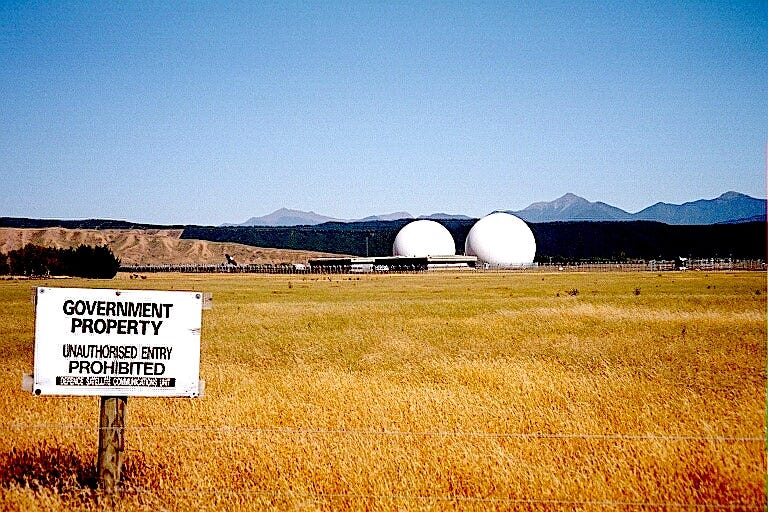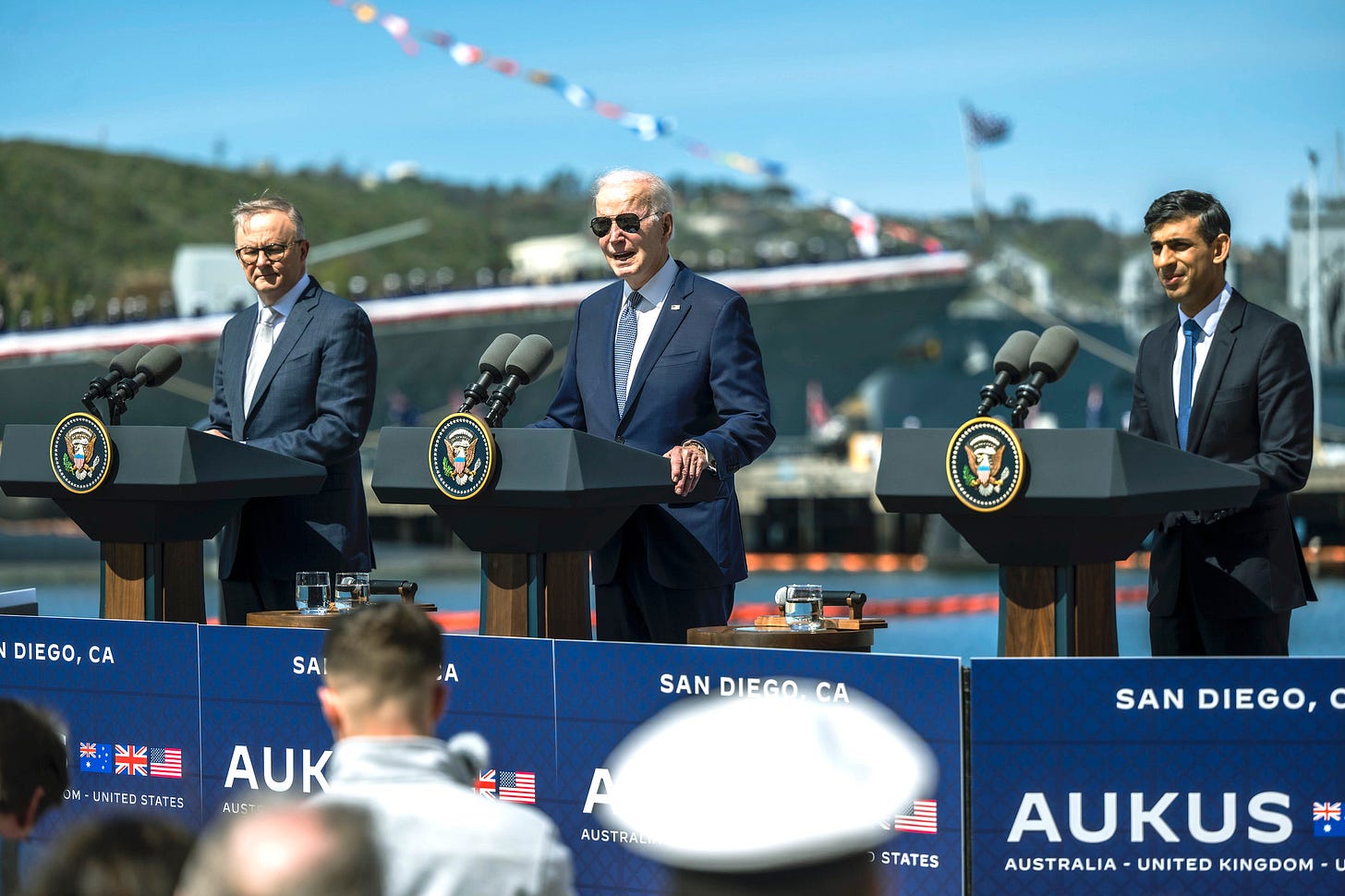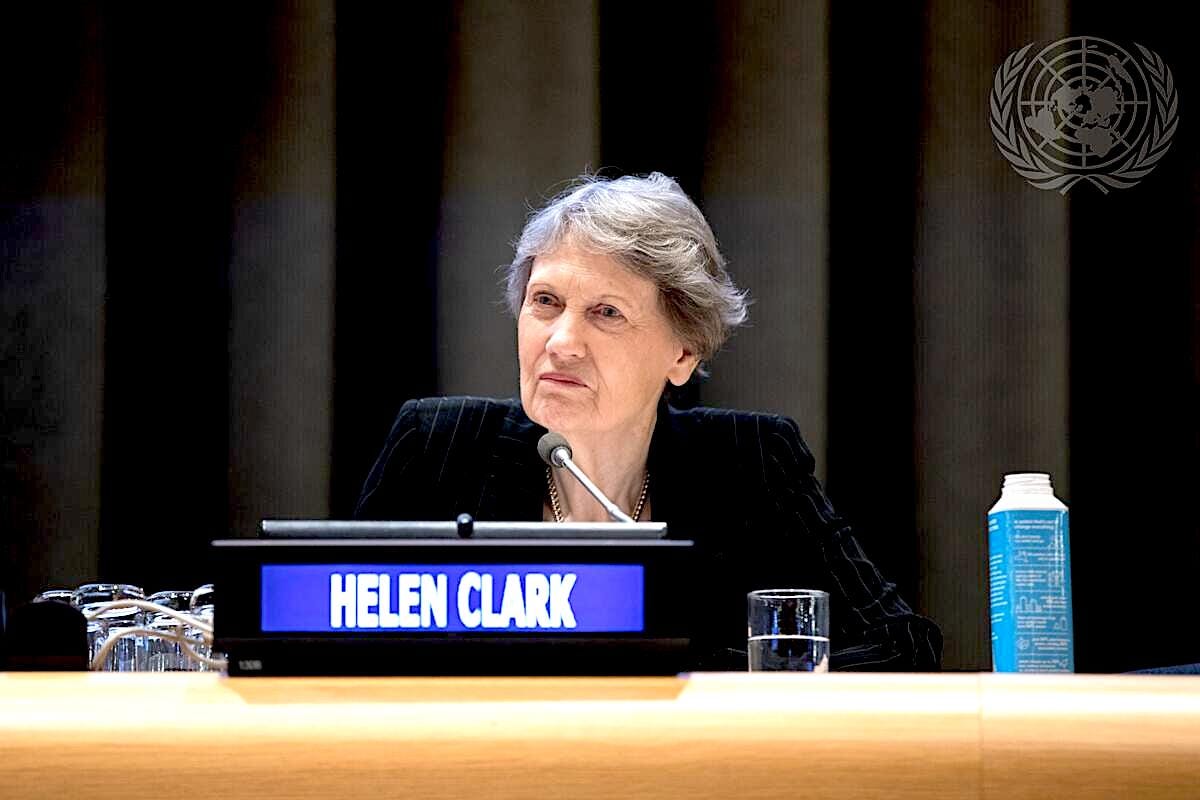Secret US Intel Operation in New Zealand Exposed
Questions remain after the Inspector-General's report found the signals intelligence system operated for nearly a decade without the government knowing.

This story was first published by Consortium News
New Zealand’s public should be deeply concerned over revelations its security state facilitated a suspected US intelligence operation capable of supporting military actions for nearly a decade without the government’s knowledge, a constitutional lawyer says.
A report by Inspector-General of Intelligence Brendan Horsley on March 21 revealed a signals intelligence system embedded in the country’s Government Communications Security Bureau (GCSB) ran from 2012 to 2020 without ministerial knowledge or approval.
It followed a Memorandum of Understanding (MoU) signed in secret in 2011.
The spy agency, like its Five Eyes Western intelligence partners GCHQ in Britain and the NSA in the US, collects, assesses and produces reports on foreign intelligence. It operates a satellite monitoring station at Waihopia near Blenheim and a radio receiving station at Tangimoana at Foxton, both capable of collecting foreign and domestic intelligence.
Horsley’s report found an unnamed country had used the infrastructure to intercept and decode messages that could be used to support “military actions by foreign partners”.
Former New Zealand Prime Minister Helen Clark said the agency behind the scheme likely belonged to the US. The spy program is suspected to be ‘Apparition’, used to geolocate targets during the US ‘War on Terror’, revealed by whistleblower Edward Snowden in 2013.
Auckland University senior law lecturer Fuimaono Dylan Asafo is now calling for new laws to ensure proper oversight is imposed on the country’s spy agencies so any future government knows exactly what the security state is up to.
Speaking in his capacity as spokesperson for foreign policy group Te Kuaka, Afaso said:
“This should be of major concern to all New Zealanders because we are not in control here. The inquiry reveals that our policies and laws are not fit for purpose and that they do not cover the operation of foreign agencies within New Zealand.
“It appears from the inquiry that even GCSB itself lost track of the system and did not know its full purpose.
“We do not know what military activities were undertaken using New Zealand’s equipment and base, and this could make us unknowingly complicit in serious breaches of international law. The law needs changing to explicitly prohibit what has occurred here.”
The report, much of which remains classified, makes it clear there was very little oversight into how the suspected US signals operation was run and that it was impossible to determine whether it broke New Zealand law or that the intelligence enabled military targeting that broke international law.
It said the spy system was only “rediscovered” following an audit in 2020 when equipment reportedly stopped working, after which the matter was referred to the Inspector-General to probe.
The system was accessed remotely by the agency, with intercepted signals being passed on to it. The MoU stated the system would not be used to target New Zealanders and that no communications would be collected from local telecom networks without a warrant.
Records showed 29 intelligence-gathering tasks ran between 2014 and 2020, but the true number performed is impossible to determine, as well as the nature of the information gathered.
Horsley’s report found inadequate record keeping and lack of evidence to show staff ever queried the purpose of the requested tasks. It stated that in agreeing to host the system the GCSB did so with senior officials having “negligible” awareness of it and with staff running it having inadequate training or guidance.
The report said the ability of the intelligence to contribute to military action had been “moderated significantly by the geographical limits of GCSB collection”.
This suggests the potential to aid US military operations was limited to Asia-Pacific, where New Zealand’s Western allies are preparing for a war with its chief trading partner China, one of several centres of power now challenging US hegemony.

News of the operation came on the heels of a two-day visit to New Zealand by China’s Foreign Minister Wang Yi beginning on March 17 to discuss bilateral trade and cooperation in the Indo-Pacific. Wang also visited Australia afterwards on a similar diplomatic mission.
The suspected US operation will be of concern to Beijing, regardless of the report’s finding that it was not politically approved, that it ended in 2020, and that, less plausibly, New Zealand’s senior spooks suddenly became unaware of it.
The Inspector General’s report said then bureau director Simon Murdoch in 2011 had noted in an email that his legal team would need to be closely involved in the MoU process, as well the minister with oversight of the GCSB being made aware of it, with his consent also potentially needed.
However, the report found no evidence of any subsequent ministerial briefings or correspondence. It also noted that Ian Fletcher, appointed GCSB director in February 2012, said he was not told about the MoU during his transition into his new role.
The IG found no evidence Fletcher had been told. The report also said the GCSB’s current senior leadership and legal team had no knowledge of it either, suggesting institutional knowledge of the operation simply disappeared.
The report found this was due to poor internal procedures as well as multiple acting senior figures coming and going during the time after the MoU was signed, while lax rules governing the organisation had allowed officials to avoid telling the government.
It is unclear whether the GCSB legal team specifically advised senior officials permissive legislation governing the bureau at the time would allow them to avoid informing ministers.
The report makes it clear senior staff working on the MoU were aware of how politically significant the signals intelligence system was and the potential legal implications it posed.

This awareness would have been partly informed by past reports by the inspector-general. A report in 1999 had probed concerns by then Prime Minister Clark that GCSB activities could be unduly focused more on the needs of Five Eyes security partners than New Zealand’s.
Clark had also been concerned about the possibility New Zealand citizens themselves could be illegally spied on.
Given prior scrutiny of people like Clark, it seems inconceivable to some that senior GCSB officials would have been left unaware a US intelligence operation kept secret from the government was running at the bureau.
Responding to last week’s report, Clark told media those who had been in charge within GCSB at the time should be disciplined for hiding it from government.
“The GCSB, operating at this more junior level, obviously couldn’t be sure that what it was doing was in accordance with the government’s intelligence requirements and with New Zealand law,” she said.
However, she concurred with the report’s findings that the MoU had been signed during a period of flux when there were acting leaders between 2010 and 2012, which had led to senior management subsequently not being aware of the US operation. For Clark, “all checks and balances seem to have broken down.”
Given the contradictions implicit in the report, questions remain over who knew what and whether the security state is continuing to accede to similar requests by the US without the knowledge of government.
Afaso’s colleague, Te Kuaka co-director Marco de Jong, said any involvement in “Pillar II” of the anti-China nuclear submarine alliance AUKUS would compound problems of democratic oversight that Horsley’s inquiry had raised.
He said it would create further distrust over New Zealand’s ability to avoid entanglement in “other people’s wars”. The Pacific is becoming increasingly militarised and divided, with nations facing pressure to “choose sides” as the US seeks to maintain primacy and contain its peer rival China.
[See: New Zealand Leaning to Controversial AUKUS Alliance]
Under law enacted in the late 1980s New Zealand is a nuclear-free zone, with nuclear-powered vessels and weaponry banned from entering its jurisdiction.
However, Pillar II is being pushed as a non-nuclear component of the pact, compatible with its anti-nuclear tradition. It is a distinction rendered meaningless by the fact Pillar II would involve intelligence sharing with AI-driven targeting systems and nuclear-capable assets, Te Kuaka argues.
While in Australia for a meeting of foreign and defence ministers in February, New Zealand Defence Minister Judith Collins strongly expressed a desire to join the alliance, although officials maintain the potential role is still being defined.
Pillar II aims to win a next-generation arms race involving new autonomous weapons platforms, electronic warfare systems, and hypersonic missiles.

Joining AUKUS would fundamentally restrict the government’s ability to shape how its military and the GCSB directed their efforts, which would be largely driven by foreign policy in Washington.
Andrew Little, a former minister who was previously in charge of the GCSB, told media the GCSB had a “much different attitude” since the MoU was signed in 2011, regarding complying with legal obligations and relationship with ministers. He said he supported the operation being directed to Horley to investigate after becoming aware of it because he was concerned it was inconsistent with legislation that tightened oversight, which had taken effect in 2017.
However, Afaso points out:
“Regardless of suggestions the system was established under previously lax legislation, its operation continued through several agency and legislative reviews.”
Horley’s report stated the bureau acted legally. It stated:
“Though the authorisation process for intelligence sharing at the time seems manifestly inadequate, a Ministerial authorisation in place in 2012 for the GCSB to share intelligence and cooperate with the foreign partner was broad enough to cover the capability and so the decision to host the system without further Ministerial approval was lawful.”
It is clear failure to bring it to the relevant minister’s attention wilfully circumvented government oversight and control over its activities. In doing so, New Zealand’s security state effectively allowed US military intelligence to usurp its government’s democratic checks and balances so it could pursue actions against other states and individuals, possibly nefarious in nature given the US’ history of extra-judicial killings.
The corrosive effects of such secrecy remain hard to quantify in a country under pressure to give up what’s left of its independent foreign policy altogether by joining a military alliance that would more openly enmesh it in schemes of US domination against its Pacific neighbours for years to come.




The revelation by the Inspector-General of Intelligence of Security was not transparency. It was damage control.
Why suddenly reveal workings of the Realm's intelligence services which had been successfully kept secret for more than 15 years? Because there had been a leak, and the New Zealand government needed to swiftly frame the issue in a manner which suited its own colonialist purposes. The present and previous governments are claiming that this operation was “lawful” but clearly it was not. The system was installed in New Zealand because it was there to gather intelligence on New Zealand residents and citizens and to identify them as targets for assassination.
We now have a situation where the security services of New Zealand control its government, and not the other way around as would be normal in a democracy. The "security chiefs memo" of 2017 to Jacinda Ardern (not covered in the New Zealand media but leaked to the "Financial Times" of London) set to dictate the foreign and certain domestic policies of the then government. This policy coup by the SIS, GCSB and the military met with astonishing success. Then in 2022 the SIS placed its former Director-General Rebecca Kitteridge at the head of the Department of Prime Minister and Cabinet. So in the space of six years the security services have managed to put themselves in the driver's seat of the New Zealand political system.
This will not just work to the disadvantage of those targeted for assassination (mainly "political extremists" but easily extensible to truculent journalists and errant politicians). It will also result in foreign and domestic policy decisions which while approved by the security services will have catastrophic consequences for the New Zealand economy and society.